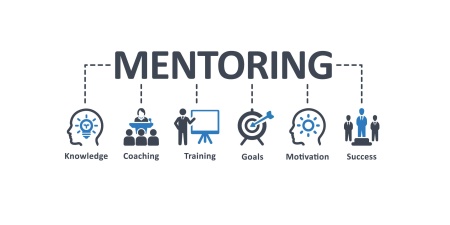By Dan Horan, Senior Associate Consultant at Indian River Consulting Group
The need for a strong strategy does not stop because of unprecedented times. If anything, troubling times should highlight the importance of a sound strategy based on customer needs and market realities.
Strategy starts from the outside in. That is, strategy starts with your customers, both what they need and what they could do without. It’s not enough to just ask your sales team what they think because they won’t think objectively. They’re focused on selling (which is what you want them to do). Their every interaction with a customer comes back to “How can this help me sell them more in the future?” It’s not their fault; it’s the way they are wired. However, you need to be accountable to your customers.
Starting from the inside is the number one error distributors make when creating a strategy. Rather, you must start with your customers and their needs, wants, desires and demands. Many distributors launch their strategies by doing a SWOT analysis (Strengths, Weaknesses, Opportunities and Threats). They get in a room, discuss what they think they are good at, bad at, could improve on and should keep an eye out for. The issue is that this runs a high risk of becoming an echo chamber. If customer challenges are changing, then their expectations are changing as well.
You may think you know your business and customers best and can evaluate what you are doing well or not. But how well do you really know your customers and their emerging challenges? Do you have a source of insight that does not rely on your sales force? How often do you take the time to truly understand what your customers value (or more importantly, don’t value) about your services?
You may have gotten away with building your strategy without proper customer insights in the past, but the ability to do so is quickly disappearing. Worthy competition, internet transparency, industry consolidation and uncertain times mean gaining and keeping profitable customers is more important (and more challenging) than ever. Without a clear understanding of your customer’s changing expectations, you run the risk of grossly under delivering (not satisfying their needs) and/or over delivering (wasting resources on needs they don’t have).
To build any true strategy, start with customer insights as your foundation.
What is customer insight, and why does it matter?
There are many types of customer insights and, depending on your goal and use for the insights, some are better than others. When it comes to strategy, the best source of customer insight is qualitative interviews.
Qualitative interviews involve asking questions to drive an in-depth discussion between peers to find out what motivates or drives customer behavior.
Customer insight, then, is the resulting data. Without it, you are making decisions based on opinions. It takes discipline to utilize data, but it presents the best opportunity for actionable results.
How to get customer insight
The way your customer insight data is collected is key. The better the methodology, the better the results and the usefulness of the data. Poor methods mean constantly questioning the data and its validity. The best way to collect customer data is by going straight to the source. Below are some tips for creating better customer insights.
Conduct qualitative interviews. Qualitative interviews are one-on-one discussions between trusting peers. It is not a group or panel discussion. It does not have to be in-person. In fact, phone is often better because it removes the temptation of discussing other business. Regardless, it must be a conversation and not an emailed set of questions. While some customers will continue to be in crisis mode, many will appreciate your interest in their business outside the normal chain of communication (especially if the interest comes from an owner or senior executive). Initiating a rapport today, even if it is an abbreviated version of a qualitative interview, may allow for deeper insights in the future, with customers more willing to carve out time down the road to discuss broader strategic issues and insights.
Focus their attention. Any visit or call to discover customer insights should be singularly focused. Don’t try to tack it onto the end of a sales call or the beginning of a quarterly review. The interview should be the only focus, or it will be diluted and influenced by whatever the other conversations are about.
Ask guiding questions. Qualitative interviews start with an interview guide. An interview guide is a set of questions that help guide a conversation, not a form to be filled out and answered. The questions are a starting point and the interviewer must dig deeper and ask intelligent follow-up questions. An interviewer needs to understand the source of opinions and get past the surface “fluff.”
Encourage dialogue. Questions should be open ended and encourage a dialogue. “Yes” and “no” questions do not work and will stop a conversation in its tracks. Consider provocative questions such as, “If we were to go away, what would you miss most and what would you do about it?” or “If you were king for the day, what is the one thing that you would change about your business?” or “What is the most persistent problem that you keep working on but it won’t go away?” Use this as an opportunity to better understand their business, not just what you can do for them.
Don’t be afraid of basic questions. Ask basic questions, and don’t worry about admitting you don’t know something. Avoid assumptions. If you don’t ask a question because everyone knows the answer you won’t know if your assumption is true.
Be curious. Always ask the next question. Always ask “Why is that?” Or “Why do you do that?” or “What does that mean?” Have them define terms like “service,” “responsive,” or “relationship.” What do those terms mean to them? Listen to understand, not to respond.
Listen for what’s unsaid. The things that are not said are as important as the things that are. If you do something unique and that you believe is truly valuable, but it never comes up with customers unless you prompt them, then it probably is not as valuable as you think. Pay attention to what you don’t hear. Here’s a great example: We were taking a client through the customer interview process. We conducted dozens of interviews with a wide range of their customers. At one of the read-out meetings, a Senior Vice President interrupted as asked, “What about the gift cards? We need to make sure we don’t forget about the gift cards.” We exchanged looks and asked, “What gift cards?” It turns out, every Christmas they give every customer a $200 gift card as a thank you for their business. The Senior Vice President was convinced that customers loved the gift cards and would buy less if the client were to do away with them. Yet, in dozens of conversations, not a single customer brought up the gift cards.
Schedule multiple interviews. Encourage several employees to conduct the interviews. Don’t worry if they are not customer-facing employees. In fact, the ones that don’t normally ask questions tend to be the best at gathering customer insights. They are not concerned about looking foolish or asking obvious questions because they genuinely don’t know the answers. In fact, at multiple companies, the best interviews come from either the finance department or HR — often the least customer-facing of departments. Sales reps go to great lengths to never come across as anything but knowledgeable, which contributes to why gaining customer wallet share through product expansion initiatives often fail, but that’s a different article. Personnel in back-office functions don’t have the same concerns about maintaining the “expert” role.
Watch for themes. Discuss your customer insights as a team throughout the information-gathering process. This is often the most revealing part. Have interviewers share their notes and discuss the potential insights as small team, paying attention to themes as they begin to appear.
Keep it about the customer. Remember, with customer insights, it’s all about the customer. While it’s natural to talk about what you can do for a customer, try to avoid spending too much time on the subject. The goal is finding out what they need — even the things they are not getting from you. If you get stuck, try to get them to compare you with a competitor, or ask about an unrelated side of their business (something you don’t serve) to keep the ideas flowing.
Gathering effective customer insights is both an art and a science. It takes time and practice to perfect. Yet, it is immensely important and forms the foundation of any good strategy.
Remember, this is not the first time our backs have been against the wall. Our country has an unequaled legacy of innovation and your customers, like you, are coming up with creative ways to survive and thrive. These problem-solving efforts will undoubtably bring about permanent changes in the competitive advantage balance. Hearing from your customers today will give you early awareness of emerging solutions and allow you to react quickly to the new landscape.









